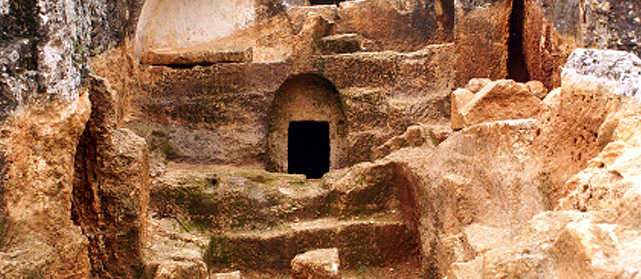|
Kedem has professional experience in moving ancient tombs and cemeteries. There are few organizations in the world which have gathered as much professional experience and capability of integrating engineering and archaeological solutions as Kedem has through past projects in the field.
Why Move Graves?
Ancient cemeteries often cover extensive areas in modern neighborhoods, city centers and public areas; there are many projects that necessitate the clearing of these ancient graves. There are infrastructures which cannot be rerouted past burial sites, if these are exposed while laying the infrastructure. Critical roads often pass in areas where graves are exposed, along with houses and public structures. In general it is desirable to adopt a respectful approach toward the dead and avoid, when possible, developing initiatives entailing the damage and removal of graves. This holds true also for ancient gravesites where the identity and religious affiliation of the deceased is no longer known. However, in many cases an absolute avoidance of development in the vicinity of ancient graves can lead to the total disruption of modern life. In these cases it is proper to find intermediate solutions, including the removal of graves and even cemeteries.

Religious Approaches to the Removal of Graves and Cemeteries
In Judaism, Christianity and Islam there are many examples of the removal of graves. Despite restrictions, such removals were practiced in the past by all religions. However, in recent years we are witnessing a process of fierce radicalization in Israel (though not the rest of the world) against openness and flexibility by clergy (Jews and Muslims) when dealing with religious permits for such removals. There is no doubt that the background to this radicalization is political and not religious.
Examples from Israel and the World
Over the years the Kedem team has surveyed dozens of projects which involved the removal of cemeteries for development needs in North America and Europe. Some of the projects necessitated the removal of thousands of graves, including ancient ones; in some it was possible to identify the deceased by name whose relatives still lived in the community. In many cases the removals were done by organizations and companies which specialize in conducting archaeological excavations.
Graves and cemeteries have been removed at dozens of sites in Israel as well; this is true of Jewish, Christian and Muslim graves. These removals were done despite the fact that the excavation and removal of graves have become more difficult and that there are many entities trying to prevent it.
Tomb Removal Techniques
There is a wide variety of techniques for the removal of graves. It is possible to cut the graves out and move them as "blocks," including all their contents. It is also possible to freeze the graves in the ground and remove them without damaging their contents. However, the customary system in Israel and the world is to conduct a carful and meticulous archaeological excavation in order to expose the skeletons and document their condition and exact location. Attention must be paid to any detail which can help identify the deceased (including those left at the burial site). Then the skeletons are moved into individual containers, and a proper spot for reburial is located for the containers. This removal process should be accompanied by clergy and with the maximum observation of the accepted rituals of the deceased's religious group.
|






